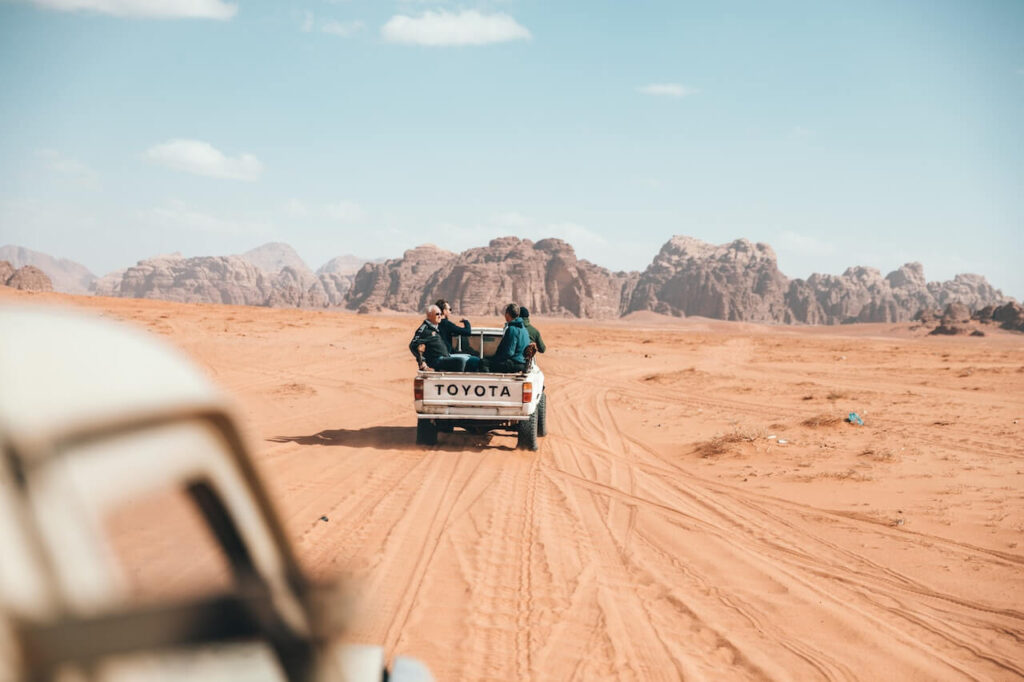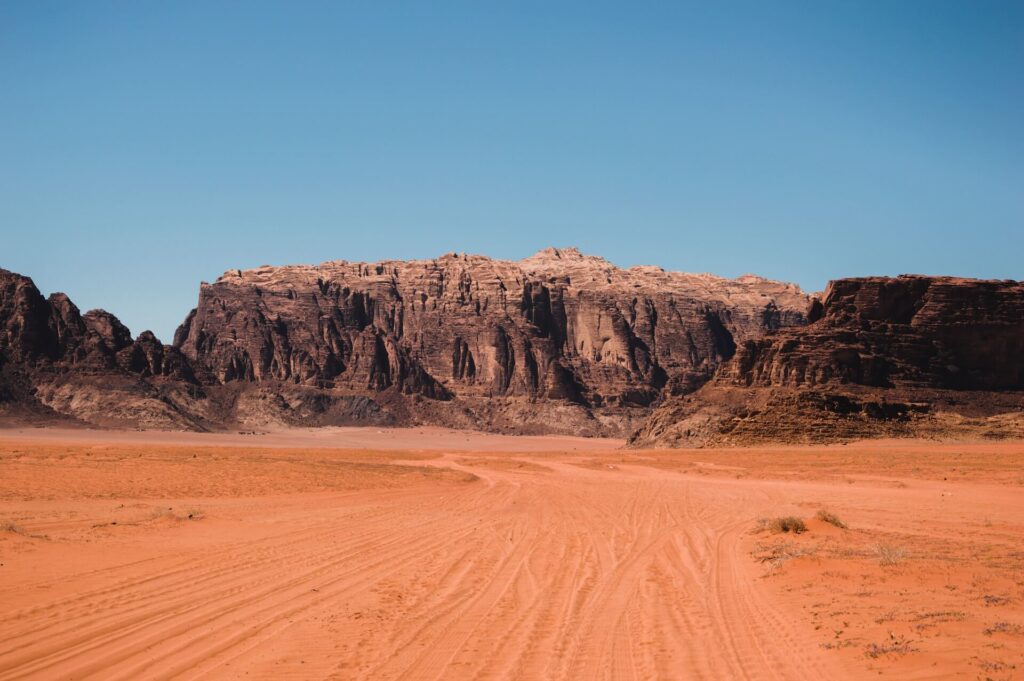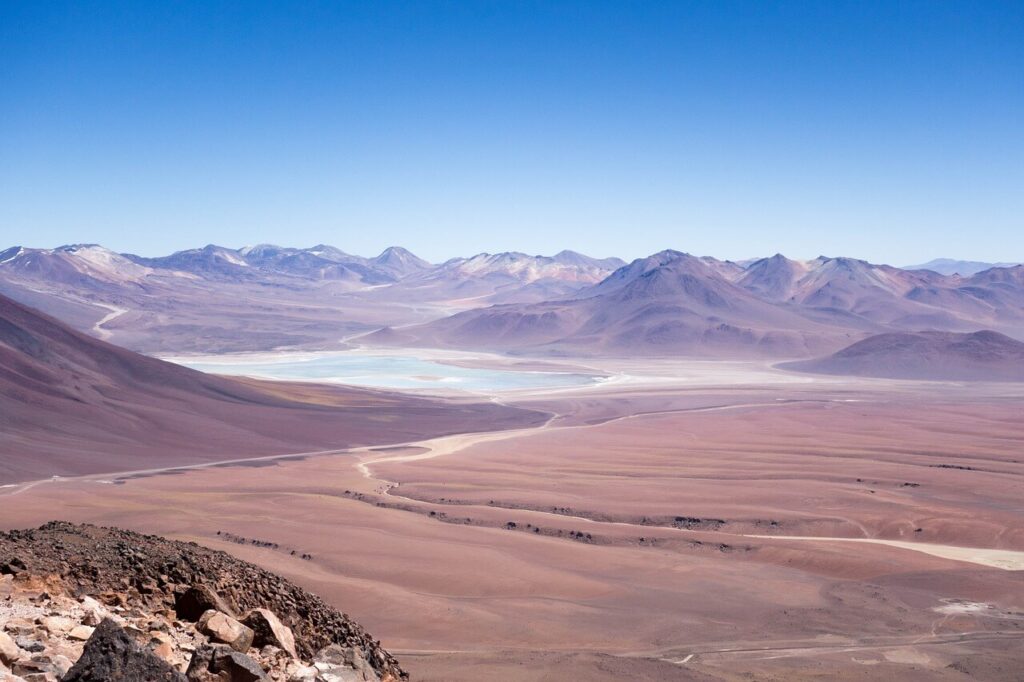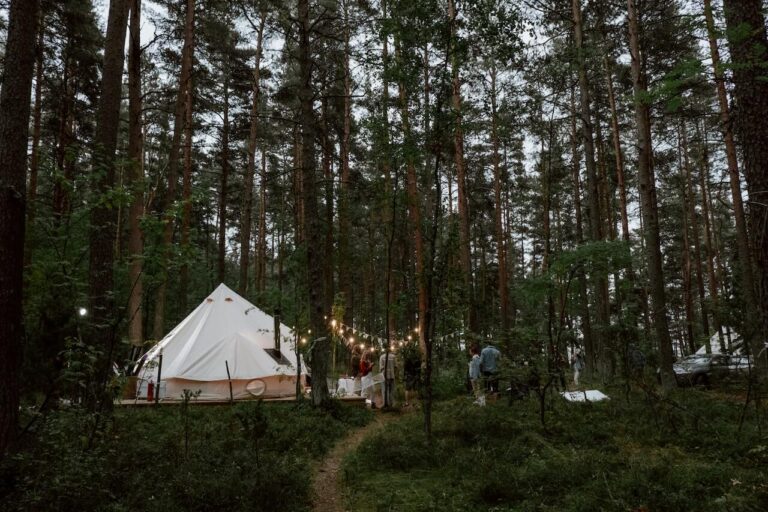
Introduction: Importance of desert travel for outdoor enthusiasts
Desert travel holds immense significance for outdoor enthusiasts. It offers a chance to escape the hustle and bustle of city life and immerse oneself in the tranquil and awe-inspiring beauty of the desert landscapes. Deserts are known for their unique features, such as towering sand dunes, mesmerizing rock formations, vast salt flats, and stunning sunsets, which provide a breathtaking backdrop for outdoor adventures.
For outdoor enthusiasts, desert travel provides an opportunity to challenge oneself physically and mentally. Hiking through sand dunes, navigating rocky terrains, and conquering towering cliffs require strength, endurance, and determination. It’s a chance to push one’s limits, overcome obstacles, and experience a sense of accomplishment.
Furthermore, deserts are often remote and untouched, offering a sense of solitude and escape from the crowds. This allows outdoor enthusiasts to connect with nature on a deeper level, appreciate the serenity of the desert, and experience a sense of peace and tranquility.

7 Must-Visit Desert Travel Destinations for Outdoor Lovers
1: Sahara Desert, Africa
The Sahara Desert, located in Africa, is the world’s largest hot desert, spanning over 3.6 million square miles across several countries including Algeria, Chad, Egypt, Libya, Mali, Mauritania, Morocco, Niger, Sudan, and Tunisia. It is known for its iconic golden sand dunes, dramatic rock formations, and ancient oases that create a mesmerizing landscape unlike any other.
Geographic Location and Unique Features:
The Sahara Desert is located in northern Africa, stretching from the Atlantic Ocean in the west to the Red Sea in the east, and from the Mediterranean Sea in the north to the Sahel region in the south. It is characterized by its extreme dryness, with vast stretches of sand dunes, rocky plateaus, and sparse vegetation.
One of the unique features of the Sahara Desert is its massive sand dunes, some of which can reach heights of up to 500 feet. These towering dunes are constantly shaped by the wind, creating stunning patterns and shapes that are a photographer’s dream. The desert is also home to ancient oasis towns, such as Timbuktu in Mali and Siwa Oasis in Egypt, which provide a glimpse into the history and culture of the region.
Outdoor Activities for Adventure Seekers:
- Camel trekking is a popular activity in the Sahara Desert, allowing travelers to traverse the desert like ancient nomads and experience a unique sense of adventure.
- Hiking is a popular activity in the Sahara Desert, with various trails that take you through stunning landscapes, including the Tassili n’Ajjer National Park in Algeria known for its rock art and prehistoric sites.
- Rock climbing is a thrilling adventure in the Sahara Desert, with unique rock formations and cliffs that offer challenges for experienced climbers.
- Stargazing is a highlight of the Sahara Desert, with clear and dark skies offering a spectacular view of the stars and constellations.
- Minimal light pollution in the Sahara Desert makes it an ideal destination for astronomy enthusiasts and night photography.
- Outdoor activities in the Sahara Desert offer a sense of adventure and allow travelers to immerse themselves in the unique landscapes and culture of the region.
Recommended Time to Visit and Travel Tips:
The best time to visit the Sahara Desert is during the cooler months from October to April, when temperatures are more moderate and the weather is pleasant for outdoor activities. The summer months (May to September) can be extremely hot, with temperatures reaching well over 100°F, making it challenging for outdoor activities.
When traveling to the Sahara Desert, it’s important to come prepared with plenty of water, sunscreen, and appropriate clothing to protect against the harsh desert environment. It’s also advisable to hire a local guide or join a guided tour for safety and to navigate the vast desert landscape.
Respecting the local culture and environment is crucial when visiting the Sahara Desert. It’s important to adhere to local customs, such as dressing modestly and being mindful of cultural sensitivities. It’s also essential to practice Leave No Trace principles and avoid disturbing the delicate desert ecosystem.

2: Moab, Utah, USA
Moab, located in the southwestern part of the state of Utah in the United States, is a renowned desert destination that attracts outdoor enthusiasts from around the world. Nestled in the heart of the Colorado Plateau, Moab is known for its striking red rock formations, dramatic canyons, and unique desert landscapes that offer a playground for adventure seekers.
Overview of the Desert Landscape and Attractions:
Moab is surrounded by stunning desert landscapes, including the world-famous Arches National Park and Canyonlands National Park. Arches National Park is known for its iconic red rock arches, towering spires, and balanced rocks, while Canyonlands National Park features breathtaking canyons, mesas, and buttes carved by the Colorado River and its tributaries.
In addition to the national parks, Moab also boasts other natural attractions such as Dead Horse Point State Park, with its breathtaking vistas of the Colorado River and deep canyons, and the La Sal Mountains, which provide a striking contrast to the desert landscape with their snow-capped peaks.
Popular Outdoor Activities:
- Hiking is one of the most popular outdoor activities in Moab, with numerous trails that take you through the stunning red rock formations, canyons, and arches of Arches National Park and Canyonlands National Park.
- Trails vary in difficulty, ranging from easy family-friendly hikes to more challenging treks for experienced hikers, offering options for all skill levels.
- Rock climbing is a world-class activity in Moab, with unique sandstone cliffs and towers that attract climbers of all skill levels, from traditional climbing to sport climbing and bouldering.
- Moab offers routes for climbers of all skill levels, making it a paradise for rock climbing enthusiasts.
- Mountain biking is a popular adventure activity in Moab, with an extensive network of scenic trails that cater to all levels of mountain bikers.
- The famous Slickrock Trail is a must-ride for experienced bikers, while the Moab Brand Trails and the Klondike Bluffs area offer more beginner-friendly options, providing opportunities for all levels of mountain bikers.
Recommended Time to Visit and Travel Tips:
The best time to visit Moab for outdoor activities is in the spring (March to May) and fall (September to November) when the weather is mild and the temperatures are cooler, making it ideal for hiking, rock climbing, and mountain biking. Summers can be extremely hot, with temperatures often reaching over 100°F, so it’s important to take proper precautions and stay hydrated if visiting during this time.
When visiting Moab, it’s crucial to be prepared with plenty of water, sunscreen, and appropriate clothing, as the desert environment can be harsh and unforgiving. It’s also important to stay on designated trails and respect the local flora and fauna to help preserve the delicate desert ecosystem.
Moab can get crowded during peak seasons, so it’s advisable to make accommodations and trail reservations well in advance. Additionally, it’s important to be mindful of Leave No Trace principles and practice responsible outdoor recreation to minimize your impact on the environment and ensure that Moab’s natural beauty remains preserved for future generations to enjoy.

3: Wadi Rum, Jordan
Wadi Rum, also known as the Valley of the Moon, is a remarkable desert destination located in southern Jordan. Renowned for its dramatic desert landscape, Wadi Rum has been inhabited by various cultures for thousands of years and has gained popularity as a unique outdoor adventure destination in recent years.
Overview of the Dramatic Desert Landscape:
Wadi Rum is characterized by its striking red sand dunes, towering rock formations, and vast open plains, creating a surreal and otherworldly landscape that has captivated travelers and filmmakers alike. The region’s unique geological formations, including natural arches, canyons, and sandstone cliffs, make it a haven for outdoor enthusiasts seeking an unforgettable desert experience.
Outdoor Activities:
- Camel trekking is one of the most popular ways to explore Wadi Rum, allowing visitors to immerse themselves in the traditional Bedouin way of life and traverse the vast desert landscape at a leisurely pace.
- Hiking is another popular activity in Wadi Rum, with ancient trails and hidden canyons and rock formations to discover, providing a unique and immersive experience of the desert landscape.
- Stargazing is a highlight of Wadi Rum, known for its dark skies and clear nights.
- The absence of light pollution in the region provides an unparalleled opportunity to witness the beauty of the stars and constellations in the night sky, making it a perfect destination for stargazing enthusiasts.
Cultural and Historical Highlights of the Region:
Wadi Rum is not only renowned for its natural beauty but also for its rich cultural heritage. The region has a long history of Bedouin nomadic culture, and you can immerse yourself in the local traditions, learn about their lifestyle, and enjoy traditional Bedouin hospitality during your visit.
Wadi Rum is also home to several historical and archaeological sites, including rock art, inscriptions, and ruins that offer glimpses into the region’s ancient past. The site of Lawrence’s Spring, named after T.E. Lawrence, also known as Lawrence of Arabia, who was famously fascinated by Wadi Rum, is a popular tourist spot.
Recommended Time to Visit and Travel Tips:
The best time to visit Wadi Rum is during the cooler months of October to April when the temperatures are more moderate and suitable for outdoor activities. Summers in Wadi Rum can be scorching, with temperatures soaring above 100°F, making it less favorable for outdoor adventures.
It’s essential to come prepared with adequate water, sunscreen, and appropriate clothing, including hats and sunglasses, to protect yourself from the harsh desert environment. It’s also recommended to hire a local guide or join a guided tour to fully experience the cultural and historical aspects of the region and navigate the desert safely.
Respecting the local Bedouin culture and environment is crucial when visiting Wadi Rum. It’s important to be mindful of the local customs, dress modestly, and avoid any disrespectful behavior. Leave No Trace principles should also be followed to protect the fragile desert ecosystem and leave the area as you found it.

4: Atacama Desert, Chile
The Atacama Desert in Chile is renowned as the driest desert in the world, spanning over 1,000 kilometers along the western coast of South America. Despite its arid conditions, the Atacama Desert boasts unique features that make it a fascinating destination for outdoor enthusiasts.
Unique Features of the Driest Desert in the World:
The Atacama Desert is known for its otherworldly landscapes, ranging from vast salt flats and sand dunes to rugged mountains and volcanic formations. The region’s extreme aridity creates a surreal environment with minimal vegetation and virtually no human settlements, making it a haven for stargazing and other outdoor activities.
Outdoor Activities:
- Stargazing is one of the top activities in the Atacama Desert due to its clear skies, low light pollution, and high altitude.
- The desert’s remote location and lack of artificial light make it an ideal spot for observing the night sky, including the famous Atacama Large Millimeter/submillimeter Array (ALMA), one of the world’s most advanced astronomical observatories.
- The Atacama Desert is also known for its geothermal activity, with natural hot springs and geysers scattered throughout the region.
- These geothermal pools provide a unique opportunity to relax in mineral-rich waters and enjoy the stunning desert scenery.
- Sandboarding is a thrilling activity for adventure seekers in the Atacama Desert.
- The vast sand dunes offer an ideal playground for sandboarding, allowing visitors to slide down the sandy slopes on a board and experience an adrenaline rush like no other.
Recommended Time to Visit and Travel Tips:
The best time to visit the Atacama Desert is during the shoulder seasons of spring (September to November) and fall (March to May), when the weather is milder and the tourist crowds are thinner. Summers (December to February) can be extremely hot during the day, while winters (June to August) can be cold at night, so plan accordingly.
It’s essential to take proper precautions when visiting the Atacama Desert due to its extreme conditions. The high altitude, dry air, and intense sunlight can take a toll on your body, so it’s important to stay hydrated, apply sunscreen, and protect yourself from the harsh desert environment. Hiring a local guide or joining a guided tour is also recommended for a safe and enriching experience.
Respect for the local environment and culture is crucial when visiting the Atacama Desert. As an environmentally sensitive area, it’s important to follow Leave No Trace principles and avoid disturbing the delicate desert ecosystem. Respecting the local indigenous communities and their customs is also essential to ensure responsible and sustainable travel.

5: Simpson Desert, Australia
The Simpson Desert is a remote and rugged desert located in the heart of Australia, spanning three Australian states: Queensland, the Northern Territory, and South Australia. It is known for its vast sand dunes, unique landscapes, and thrilling outdoor adventures, making it a top destination for outdoor enthusiasts.
Overview of the Remote and Rugged Australian Desert:
The Simpson Desert is one of the most isolated and least populated regions in Australia, characterized by its red sand dunes, sparse vegetation, and unique geological formations. It is home to the world’s longest parallel sand dunes, known as “the simpson desert”, which can reach heights of up to 30 meters and stretch as far as the eye can see. The remoteness and untouched nature of the Simpson Desert offer a sense of adventure and exploration for outdoor enthusiasts.
4WD Adventures, Camping, and Wildlife Viewing Opportunities:
One of the most popular ways to explore the Simpson Desert is through 4WD (four-wheel drive) adventures. Driving across the vast sand dunes, tackling challenging terrains, and crossing the famous desert tracks, such as the iconic “Simpson Desert Crossing,” is a thrilling experience for adventure seekers. Camping in the Simpson Desert is also a highlight, with various camping sites offering a unique opportunity to immerse oneself in the rugged beauty of the desert, enjoy stargazing, and experience the serenity of the outback.
The Simpson Desert is also home to a diverse range of wildlife, including red kangaroos, dingoes, emus, and various reptiles. Wildlife viewing opportunities abound in the desert, providing a unique chance to observe these native animals in their natural habitat and learn about their adaptations to the harsh desert environment.
Recommended Time to Visit and Travel Tips:
The best time to visit the Simpson Desert is during the cooler months from April to September when temperatures are milder and more conducive to outdoor activities. Summers (October to March) can be scorching hot with extreme temperatures, making it less ideal for outdoor adventures.
When traveling to the Simpson Desert, it’s crucial to be well-prepared as it is a remote and challenging environment. Adequate planning, including checking road conditions, carrying ample water, fuel, food, and essential supplies, and having a reliable 4WD vehicle, is essential for a safe and enjoyable trip. It’s also important to adhere to the park regulations, follow Leave No Trace principles, and respect the indigenous cultural heritage of the region.

6: Namib Desert, Namibia
The Namib Desert in Namibia is considered the oldest desert in the world, spanning along the Atlantic coast of southwestern Africa. With its vast sand dunes, unique landscapes, and diverse flora and fauna, the Namib Desert is a top destination for outdoor enthusiasts seeking adventure and exploration.
Overview of the Oldest Desert in the World:
The Namib Desert is known for its mesmerizing landscapes, characterized by towering sand dunes, rocky plains, and dramatic canyons. The contrast of the bright orange-red sand dunes against the deep blue skies and the Atlantic Ocean creates a surreal and awe-inspiring setting. The Namib Desert is also home to unique geological formations, such as the famous “Fairy Circles,” mysterious circular patches of barren land, which add to the desert’s allure and intrigue.
Outdoor Activities such as Dune Surfing, Quad Biking, and Wildlife Viewing:
- The Namib Desert offers a variety of outdoor activities for adventure seekers, including dune surfing, quad biking, and wildlife viewing.
- Dune surfing allows travelers to slide down the steep sand dunes on a board for an adrenaline-pumping experience.
- Quad biking provides an opportunity to explore the vast expanses of the desert and navigate the sandy terrain on all-terrain vehicles.
- Wildlife viewing is a highlight of the Namib Desert, with desert-adapted plants and animals, such as oryx, springbok, ostriches, providing a unique opportunity for observation and learning about the desert’s ecosystem.
- The Namib Desert also offers cultural highlights and unique experiences, including the indigenous Himba and San communities, known for their rich cultural heritage and unique way of life.
- Visitors can learn about their traditions, customs, and survival skills, gaining a deeper understanding of the desert’s cultural significance.
- Unique experiences, such as hot air ballooning, star gazing at the NamibRand Nature Reserve, and exploring the ghost town of Kolmanskop, add to the overall charm and fascination of the Namib Desert.
Recommended Time to Visit and Travel Tips:
The best time to visit the Namib Desert is during the cooler months from April to October when temperatures are milder, and wildlife viewing opportunities are abundant. Summers (November to March) can be extremely hot, with temperatures soaring to uncomfortable levels. It’s important to carry ample water, sunscreen, and protective clothing when exploring the desert, as the sun and heat can be intense.
When visiting the Namib Desert, it’s crucial to respect the fragile desert ecosystem and adhere to responsible tourism practices. Follow designated trails, do not disturb the flora and fauna, and carry out all trash and litter. It’s also important to respect the cultural norms and traditions of the local communities and seek permission before taking photographs or engaging in any cultural activities.

7: White Sands National Park, New Mexico, USA
White Sands National Park, located in the heart of the Tularosa Basin in New Mexico, USA, is a mesmerizing destination known for its stunning white gypsum sand dunes. Spanning over 275 square miles, White Sands is the largest gypsum sand dune field in the world and offers a unique and otherworldly outdoor experience.
Overview of the Stunning White Gypsum Sand Dunes:
The unique feature of White Sands National Park is its pure white gypsum sand dunes that stretch as far as the eye can see. The sparkling white sands create a surreal and mesmerizing landscape that is unlike any other desert in the world. The constantly shifting sands, shaped by the wind, create beautiful patterns and ripples, providing a stunning backdrop for outdoor activities and photography.
Unique Outdoor Activities like Sledding, Hiking, and Stargazing:
White Sands National Park offers a range of unique outdoor activities that cater to different interests. One of the most popular activities is sledding down the sand dunes. Visitors can rent plastic sleds at the park’s visitor center and slide down the soft, powdery sand for an exhilarating experience. Hiking is another popular activity, with several designated trails that allow visitors to explore the dunes and marvel at the unique landscapes. The Park also offers ranger-led programs, such as guided hikes and moonlit strolls, providing insights into the park’s natural and cultural history.
Additionally, White Sands is renowned for its exceptional stargazing opportunities, with its remote location away from city lights offering unobstructed views of the night sky, making it a perfect destination for stargazing enthusiasts.
Recommended Time to Visit and Travel Tips:
The best time to visit White Sands National Park is during the cooler months from October to April when temperatures are milder and more suitable for outdoor activities. Summers (May to September) can be extremely hot, with temperatures reaching well over 100°F, making outdoor activities challenging. It’s important to carry ample water, sunscreen, and protective clothing, including sunglasses and hats, when visiting the park, as the bright white sand reflects sunlight and can intensify the sun’s effects.
Visitors are also advised to check the park’s website or contact the visitor center for current conditions and closures, as the park occasionally closes due to missile testing activities from the nearby White Sands Missile Range. Camping is not allowed within the park, but there are nearby campgrounds and lodging options available outside the park.

Conclusion
Exploring the desert can be an exhilarating and unforgettable experience for outdoor enthusiasts. From the vast sand dunes of the Sahara Desert in Africa to the rugged landscapes of Moab in Utah, USA, to the dramatic Wadi Rum in Jordan, to the unique Atacama Desert in Chile, to the remote Simpson Desert in Australia, to the oldest Namib Desert in Namibia, and the stunning White Sands National Park in New Mexico, USA, there are a plethora of top desert travel destinations around the world that offer breathtaking scenery, thrilling outdoor activities, and unique cultural experiences.
In summary, planning a desert adventure requires careful research and preparation, including understanding the unique features, outdoor activities, recommended times to visit, and travel tips for each destination. It’s important to be well-equipped with appropriate gear, has a solid understanding of the weather and climate conditions, and follow safety regulations and guidelines to ensure a safe and enjoyable trip.
In conclusion, embarking on a desert adventure can be a life-changing experience that allows you to connect with nature, challenge yourself physically and mentally, and immerse yourself in the beauty and culture of these remarkable landscapes. So, pack your bags, do your research, and get ready for an unforgettable desert adventure of a lifetime!
Read more articles here.





